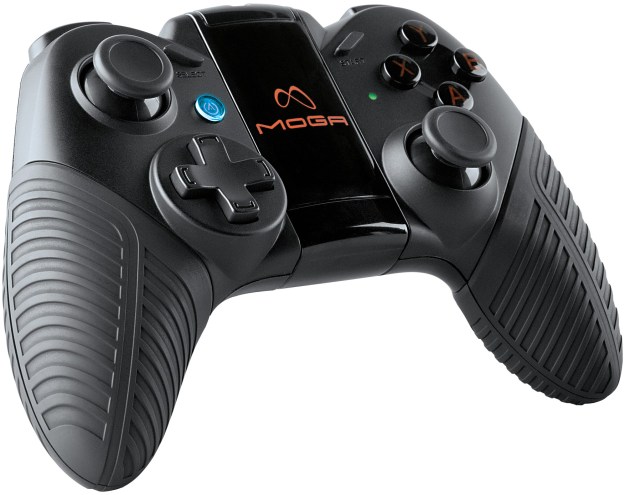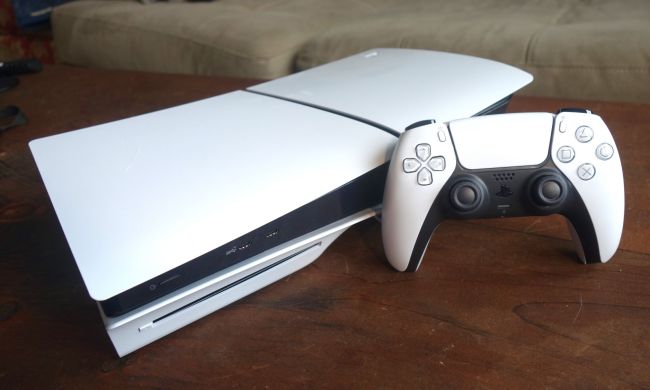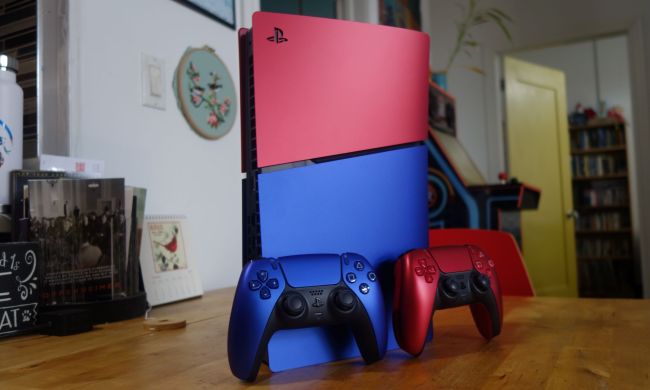
PowerA has a nifty product on its hands in the MOGA Pro Controller. The recently re-dubbed “MOGA Pocket” strikes a good mix between tactile functionality and portability, but the Pro is essentially an Xbox 360 gamepad with a flip-up, phone-friendly mount and Bluetooth support. For gamers that despair over being forced to contend with virtual controls in mobile games that strive to deliver console-style experiences, the MOGA is a compelling possibility.
PowerA has an exceptionally solid foundation to build from here. The peripheral maker’s Fus1on Tournament Controller provides the basis for the MOGA Pro, with the same materials and internal wiring used for both. A mini-USB port at the top serves as the charging port, with a full charge offering (according to PowerA) 12-15 hours of life. More than your average Android device would last with sustained gaming.
The thing that immediately stands out about the MOGA Pro if you’re a hardcore gamer is the use of analog triggers. Digital triggers of the sort that the MOGA Pocket and any number of other Bluetooth controllers use only have off and on states. Analog triggers, which are a staple of Xbox 360 and PlayStation 3, offering more degrees of control. They are particularly useful in racing games, where easing on and off the gas or brakes is important.
Not every game will offer support for the analog triggers, of course. It all depends on how the developer codes it. This is where MOGA’s positioning as a sort of platform comes in. Much like the Pocket, Pro users must install an app that they then access MOGA-supported games from. It’s up to developers to decide how to support the peripherals; once it’s all coded in, the game automatically detects which controller is connected and reacts accordingly.
The only real issue that stands in front of both MOGA peripherals at this point is support. Android is there and the games list continues to grow. Windows Phone 8 developers can now code their games to play nice with MOGA as well. This is still a very new development, however, so it will be some time before the added support translates into controller-friendly games.
Then there’s Apple. PowerA is well aware of the size of the iOS userbase but has nothing to say about what’s ahead at this time. Hopefully that will change soon, as this massive final frontier for the MOGA is bursting with some of the strongest mobile titles that are currently available.
Fortunately, Android (and now Windows Phone 8) offers plenty of fun diversions that make good use of both MOGA controllers. Whatever the future holds, PowerA’s MOGA Pro appears to be the necessary tipping point toward console-style mobile play that serious gamers have been waiting for.
The MOGA Pro Controller hits stores on April 15, 2013 with a $50 price tag.


